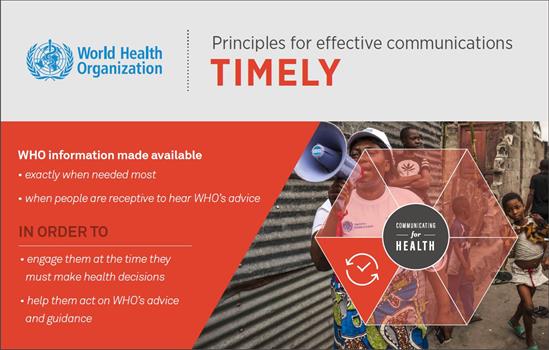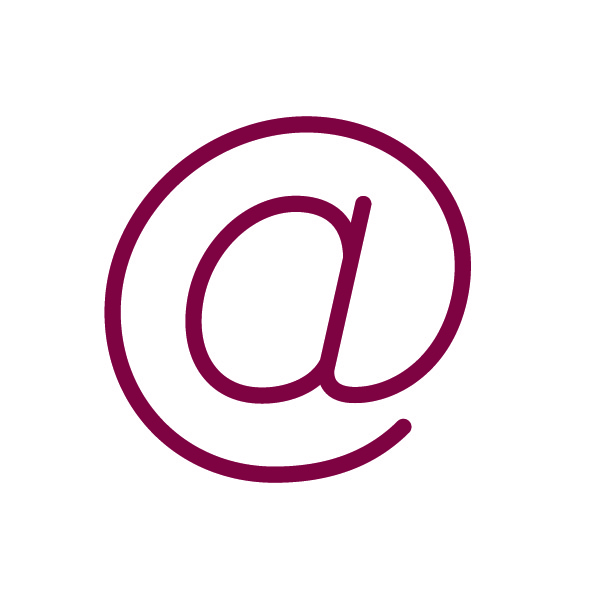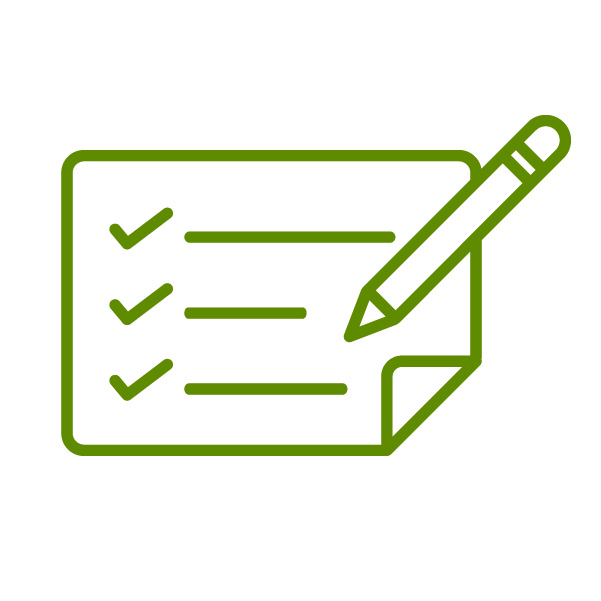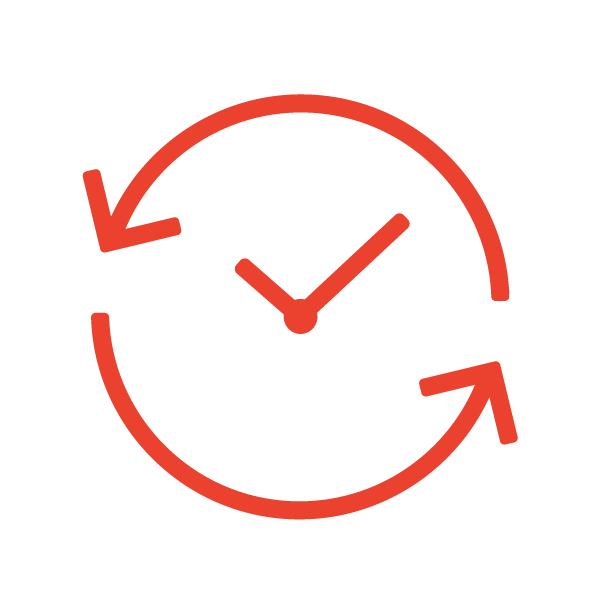
Principle: Timely
Build the conversation
Tactics to apply to make your communications timely
Build the conversation
Almost all messages need to be repeated frequently for people to remember them. If a campaign’s goal is to change behaviour, communicators must plan timing and sequencing of messages along a continuum from awareness to action. (See Actionable for a description of the communications continuum.)
First, communicators should identify if the target audience is ready to change. After analysing the relevance of the health issue to the target audience, communicators can identify the types, timing, and series of messages needed to move audiences step-by-step towards behaviour change goals. To ensure the most effective methods for delivering messages, communicators should use a mix of communication channels.
Use media and social media
Journalists are always looking for newsworthy stories. Publication of new WHO information or guidance creates opportunities for media attention.
- Use media advisories to alert journalists to upcoming news events and briefings and to invite them to cover the topic.
- Make stories more interesting and relevant by providing broadcast journalists with B-rolls. Having a B-roll available speeds development of media stories and increases chances that WHO information will be included in the news.
- Promote the WHO Media Centre. This webpage provides journalists with information to create a compelling story. They will find photos, infographics, videos and links to other resources, such as fact files, fact sheets, and online questions and answers.
- Post on social media to keep the conversation going. WHO tweets can be inserted into online conversations to sustain interest or to echo the tweets of partners that are posting about the health topic.
- Use infographics and photos to capture and sustain interest on social media and to encourage users to seek more information.
Synchronize messaging with partners
Communicators can broaden the reach of messages by leveraging distribution channels.
- United Nations (UN) partner channels include the European Broadcasting Union (EBU), the UN News Centre, UN Radio, and UN Web TV.
- Communication toolkits help synchronize communications with partners so the target audience hears the message frequently and from multiple trusted sources.
Time stories to show momentum
Use multiple compelling feature stories released across time to maintain interest. These stories can:
- highlight progress in reaching health goals;
- sustain enthusiasm by demonstrating success;
- show the impact of the Organization’s work in countries;
- describe the experience of a person who has benefited directly from a WHO recommendation, policy or action;
- focus on a health worker whose efforts have been effective as a result of a WHO action; and
- include quotes from individuals to make narratives more authentic.
Schedule webinars, Facebook hangouts and Twitter chats
Encourage partners and other influencers to share ideas on how to overcome barriers and motivate people towards recommended behaviours. Webinars and other virtual meetings are a low-cost way to encourage participants to engage their networks. People who participate in these virtual meetings are more likely to follow and promote campaign-related social media posts and hashtags.
Principles for effective communications
What we do







